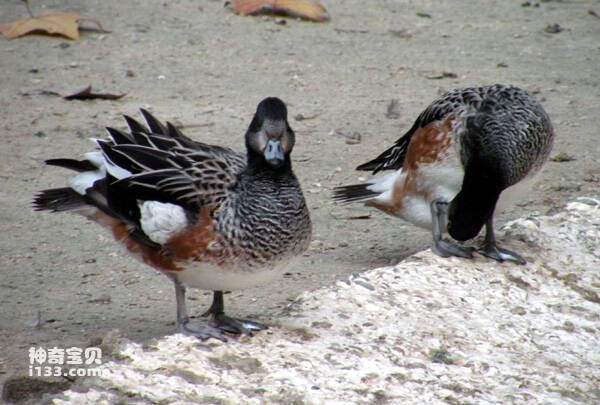Chiloe Wigeon
IUCN
LCBasic Information
Scientific classification
- name:Chiloe Wigeon
- Scientific Name:Chiloe Wigeon,Anas sibilatrix
- Outline:Waterfowl
- Family:
Vital signs
- length:43-54cm
- Weight:830-940g
- lifetime:About 20 years
Feature
The chest is clearly streaked in black and white, flanked by an orange-brown, slightly curved black bill
Distribution and Habitat
It is distributed in Eurasia and northern Africa, including the whole of Europe, Africa north of the Tropic of Return, the Arabian Peninsula, and Asia north of the Himalayas - Hengduan Mountains - Minshan Mountains - Qinling Mountains - Huai River. Indochina Peninsula and southeast coastal areas of China, including Myanmar, Vietnam, Laos, Cambodia, Thailand, southeast coastal areas of China, Hong Kong region of China, Hainan Island.
It usually lives in freshwater lakes, but also groups in rivers, lakes, reservoirs, bays and coastal salt flats and other waters.
Appearance
The black-white zebra duck is 43-54 cm long, the male weighs 940 g, the female weighs 830 g, and the life span is 20 years. Male ducks have iridescent crowns with large bright blue lines behind the eyes to the neck, white forehead and front cheeks, black feathers on the gills, and white spots under the ear overfeathers. The chest is clearly streaked in black and white, flanked by an orange-brown, slightly curved black bill. The female duck is similar to the male duck, but the plumage is slightly darker and the green crown is not as bright as the male duck.
Details
Chiloe Wigeon (Anas sibilatrix) is a medium-sized swimming bird in the family Anatidae.

Black and white ducks like to live in clusters in winter, and most of their activities choose to live in the wild grass in the marsh area near the water. It mainly floats on the surface of the water and gets its food underwater, eating plants as the staple food and sometimes animal foods. Ducks have webbed toes, but rarely dive, swim with their tails out of the water, and are good at feeding, splashing and mating in the water. Like clean, often in the water and on the land preening carefully dressed. They take care of each other when sleeping or resting, mainly eating roots, grass seeds, leaves, grass fruits, rice, etc., in marshes and lake areas, but also eating invertebrates and arthropods.

The breeding season is from April to June, with plants and grasses to build a bowl-shaped nest, the nest is above the nearby water, hidden in the water grass. Each nest lays 4 to 12 eggs and hatches for 21 to 25 days. The young birds leave the nest for 49 days and are usually incubated alone by the female ducks. After hatching, they are still cared for by the female ducks, and the ducklings follow the female ducks for food.
Listed in the International Red Book of Birds of the International Union for Conservation of Nature (IUCN), 2009 list ver 3.1.
Protect wild animals and eliminate wild meat.
Maintaining ecological balance is everyone's responsibility!








